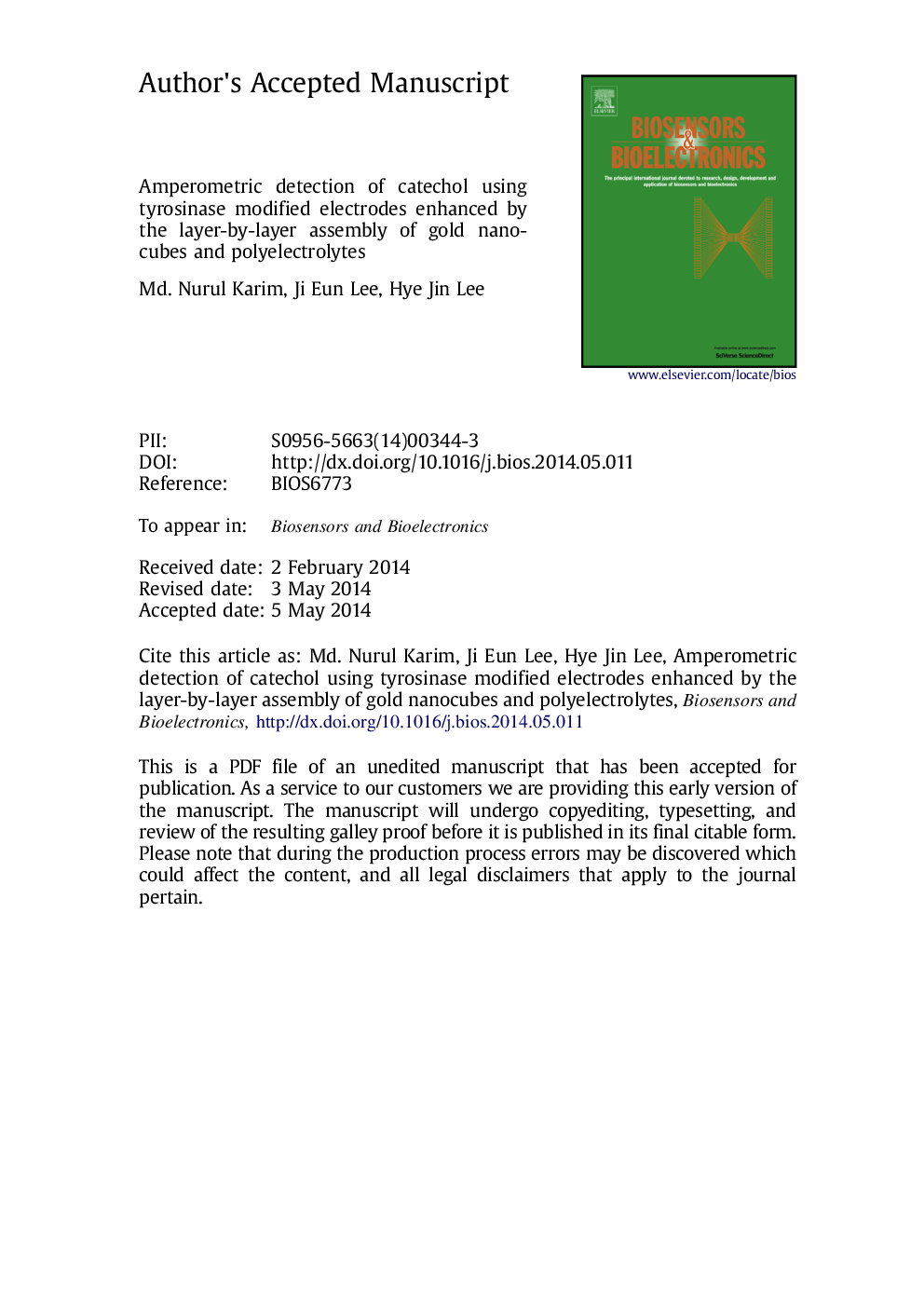| Article ID | Journal | Published Year | Pages | File Type |
|---|---|---|---|---|
| 7233451 | Biosensors and Bioelectronics | 2014 | 17 Pages |
Abstract
A novel amperometric biosensor for catechol was developed using the layer-by-layer (LbL) self-assembly of positively charged hexadecyltrimethylammonium stabilized gold nanocubes (AuNCs), negatively charged poly(sodium 4-styrenesulfonate) and tyrosinase on a screen printed carbon electrode (SPCE). A carboxylic acid terminated alkanethiol assembled on electrochemically deposited Au nanoparticles on a SPCE was used as a platform for LbL assembly. Each SPCE sensor surface was terminated with tyrosinase and the electrocatalytic response due to the tyrosinase reaction with catechol was measured using cyclic voltammetry and square wave voltammetry (SWV). The effect of introducing AuNCs into the LbL assembly to further enhance the catechol detection performance was then investigated by comparing the SWV results to those from biosensors created using both the tyrosinase modified LbL assembly in the absence of NCs and the covalent attachment of tyrosinase. A wide dynamic range from 10 nM to 80 µM of catechol with an excellent sensitivity of 13.72 A/M and a detection limit of 0.4 nM were both achieved alongside a good selectivity and reproducibility for the AuNC-modified electrodes. As a demonstration, the optimized biosensor design was applied to determine catechol concentrations in tea samples.
Keywords
Related Topics
Physical Sciences and Engineering
Chemistry
Analytical Chemistry
Authors
Md. Nurul Karim, Ji Eun Lee, Hye Jin Lee,
